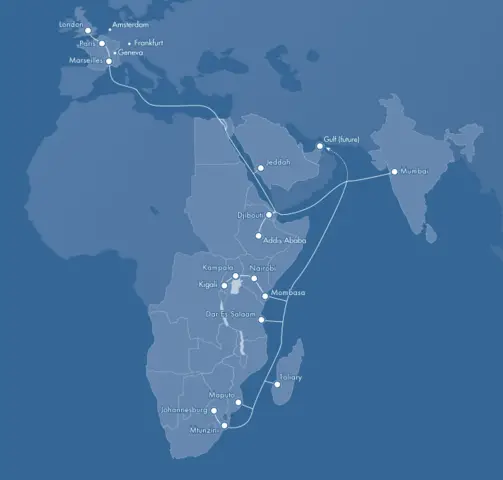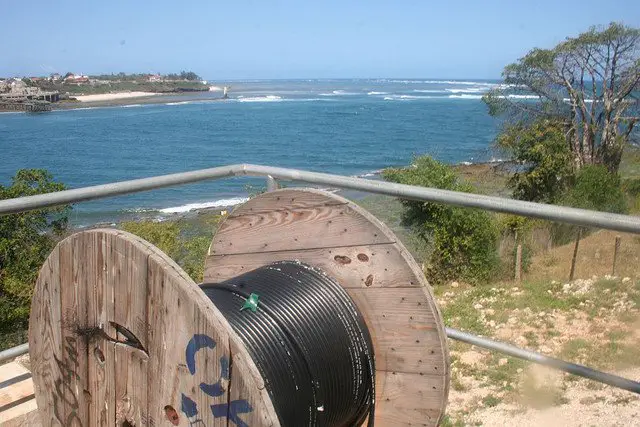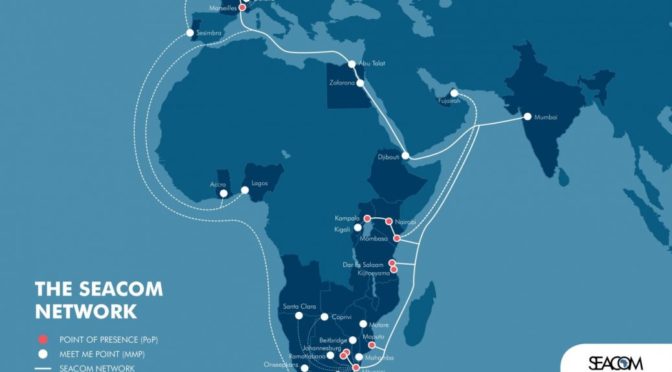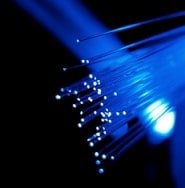SEACOM Fibre Packages / SEACOM Internet Packages
To know what SEACOM fibre or internet packages are available in your country, visit the SEACOM website for your country.
Table of Contents
SEACOM Kenya Ltd.: SEACOM Fibre Prices
Seacom Kenya Internet prices are tailored to the specific needs of the business internet access is being provided to.
To get an idea of what it would cost you to get internet for your office through SEACOM Kenya, request a quote directly from them through the contact page on their website or by telephone on the following numbers+254-20-5133000 or +254-20-5133170.
SEACOM Coverage 2023
Today in 2023, SEACOM provides fibre and wireless coverage in Kenya, Mozambique, South Africa, Tanzania, and Uganda.
SEACOM Fibre Coverage
In these countries, SEACOM provides access to the internet via its global high-speed data network for businesses and homes in the areas it operates in.
[email protected]
This is presumably an email address at Sea, a Singaporean company whose mission is to better the lives of consumers and small businesses with technology.
EASSy
The East African Submarine System (EASSy) is an undersea fiber optic cable system that connects countries in East Africa to the rest of the world.
The cable system was designed to enhance international connectivity, improve internet access, and foster economic development in the region. Here are some key points about EASSy:
- Ownership and Consortium:
EASSy is a consortium project, and it involves multiple telecommunications operators and service providers. The consortium was formed to pool resources and expertise for the construction and maintenance of the submarine cable. - Route and Landing Points:
The EASSy cable system runs along the eastern coast of Africa, connecting several countries. It has landing points in various locations, including South Africa, Mozambique, Madagascar, Comoros, Tanzania, Kenya, Somalia, Djibouti, Sudan, and Egypt. This extensive network allows these countries to have direct and reliable connectivity to the global telecommunications infrastructure. - Capacity and Technology:
EASSy was designed to provide high-capacity connectivity to meet the growing demand for internet and data services in the region. The use of fiber optic technology enables the transmission of large volumes of data at high speeds. - Role in Regional Development:
The presence of a robust submarine cable system like EASSy is crucial for the socio-economic development of the connected countries. It facilitates improved communication, enhances access to information, supports e-commerce, and encourages the growth of various industries. - Deployment and Upgrades:
The EASSy cable system was deployed in phases, with the first phase going live in 2010. Like many submarine cable systems, EASSy has undergone upgrades to increase its capacity and improve performance over time. - Collaboration with Other Cable Systems:
EASSy is part of a broader network of submarine cable systems that collectively contribute to the global internet infrastructure. Interconnections with other undersea cables enable redundancy and diverse routing options, ensuring greater reliability. - Economic Impact:
The enhanced connectivity provided by EASSy contributes to the economic development of the region by attracting investments, fostering innovation, and improving competitiveness on the global stage.
Submarine cable systems like EASSy play a vital role in enabling global communication and connectivity, and they are critical components of the modern telecommunications infrastructure.
SEACOM Cable Map

READ ALSO: Town Lodge Gaborone & 20 Other Great Places to Stay In and Around Gaborone
Some would be embarrassed to admit it, but I am going to give it to you straight up. I don’t watch, listen to, or read the news.
It’s not that I like to be out of the loop; rather, this is a defense mechanism that I developed after first being exposed to the gruesome, horrific, doomsday nature of news in Kenya.
After spending many troubled nights feeling like the world was a horrible place, nights on which coincidentally I had watched the evening news, I put two-and-two together and decided to forgo having my finger on the pulse of current events, in favor of being a calmer, happier, more positive Nairobi resident.
How do I keep abreast of what’s going on in the world, you might ask?
My response to you would be: if something is really important and worth knowing about, then people will be talking (and blogging) about it. Eventually, I’ll find out somehow.
Take, for instance, the advent of the SEACOM cable to East Africa.
Whispers of the SEACOM Cable
I first caught wind that fiber would be landing in East Africa through local tech blogs, such as Moses Kemibaro’s blog (an excellent tech blog, by the way!).
With bloggers being a more technically inclined lot than most, the East African blogosphere was awash with posts relating to this much awaited event.
Personally, although I was happy to hear that I had reason to hope for faster, cheaper Internet connectivity in the near future, I had my doubts about how long it would take for the expected benefits of the SEACOM cable to trickle down to the everyday Internet user.
After living in East Africa for 9 years, I wasn’t holding my breath.

What Is Seacom?
On July 23, 2009, marked by great fanfare across East and Southern Africa, the first fiber optic submarine cable system to serve Africa’s eastern seaboard, SEACOM, went live.
A 15,000 km cable network connecting France, Egypt, Djibouti, Kenya, Tanzania, Madagascar, Mozambique, South Africa, and India, the SEACOM cable system seemed to many “the dawn of a new era for communications between the continent and the rest of the world” given its designed capacity of 1.28 terabits per second (see the SEACOM cable map above).
SEACOM’s launch date came and went without much notice from me, since my Tanzania Telecommunications Ltd. (TTCL) home Internet connection seemed the same as always. (In hindsight, though, I should be truthful and say it became a little faster shortly after this).
Whatever the case, as I said earlier, I wasn’t holding my breath anyway.
Trickling Down to the End User
Then, on October 3, 2009, I woke up to find a press release in a local newspaper. Well, I didn’t find it, but someone pointed it out to me. 🙂
The press release said that my ISP was finally rolling out the benefits of the SEACOM cable on to its customers.
Wow, so soon? I had to find out more.
Upon contacting my ISP, I found out that the cost of my Internet service had instantly dropped by 20%.
Although this was a good start, my internet connection was still pricey.
What I wanted was a fast service that granted me unlimited Internet usage for an affordable monthly flat fee.
The best that my ISP could offer was either a very fast, less expensive (than I was already paying), pay-per-use package, or a slower, unlimited-usage, flat-fee monthly package that would cost me about a third of my household’s cumulative Internet expenditure.
The members of my household and I opted to try out TTCL’s unlimited broadband service.
TTCL’s Unlimited Broadband Service
At first, the new slower speed of my Internet connection drove me crazy.
For quite a while, I threatened to anyone who was willing to listen that I would revert to the older, more expensive—though faster—service that I’d been using.
After dusting off my tabbed browsing skills, though, I learned to deal with the slower speed and started to enjoy the fact that I could spend as much time as I wanted on the Internet, whenever I wanted, without having to think about how data-intensive some online activities can be (think: Facebook, video, and downloading applications).
Today, although I wish my ISP would offer me a faster monthly unlimited package, I am generally happier with my Internet service now than I was before the landing of the SEACOM cable.
READ ALSO: The 10 Most Popular Online Courses
How about you? How has the advent of the SEACOM cable to East Africa changed your Internet experience?
Photo Credits: linx.net; cellanr



Believe you me, the Internet is revolutionised in Nairobi. There was a time you would sit down to download things for hours and hours nut last night I was trying to purchase stuff online and my word, the difference was phenomenal. Even my Mum remarked on the speeds!! And she knows nothing about Internet.
I haven’t watched news for a long time either, I think there’s nothing more depressing than hearing the wrong kinds of things about your country day in and day out. I just can’t take it anymore, like you I know somebody’s gonna blog about it.
Lol, Mama. The life of a blogger! I see I am not the only one who depends on blogs to see what is going on. 🙂
I have been wondering about this cable that has failed to worm it’s way into UG… i must say like you am looking for a faster inexpensive way to surf and be on the net (prefferably at no cost yeah u know me!!!) So i can’t say i have felt the effect. I noticed u said the countries along the sealine. what does that mean for we the landlocked? as usual tho UG is on about how expensive it is to lay the fibreoptic and how the costs myust be inflated… trully this is all still a mystrery… i only know that different groups of people dig up the roads and such like all over Kampala.. could this be it? so u can tell i know nothing and have been barely affected!
Jurie, from what I hear, the cable has already wormed its way to UG. I’ve read on many Ugandan blogs over the past couple of months about how much faster Internet is in Kampala. Who is your current service provider? (If you want to know more, I suggest you talk to our techie Uncle. You know how he knows everything about such things! :-))
I use BOL in dar es salaam, and the fibre optic has made very little difference to my speed. It is still too slow to use skype and other good applications.
In fact, I’ve been looking for a new internet provider, and was wondering if you could tell me just how fast the TTCL unlimited service you get is?
Hi BongoBoi,
Welcome to ChickAboutTown! I apologize for how long it’s taken me to respond to your comment.I cannot quantify the current speed of my TTCL unlimited broadband, but allow me to say that it’s frustratingly slow, especially if I am not multi-tab browsing. (If I am multitab browsing, t’s fine for the most part). I don’t Skype, but to use the common example of YouTube videos, I have to wait for a video to load fully before I attempt to watch it, because otherwise it plays too slow to make sense. If you are interested in an extremely fast connection, how about trying one of TTCL’s limited packages?
I look forward to hearing what you settle on if you finally decide to change providers.
Biche